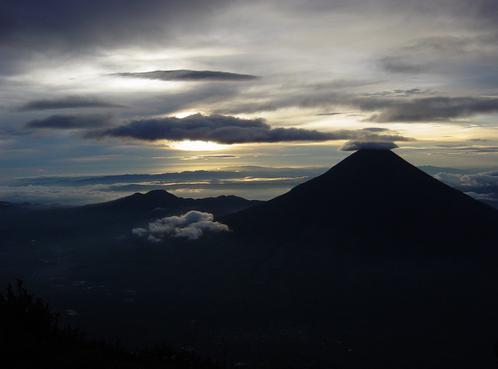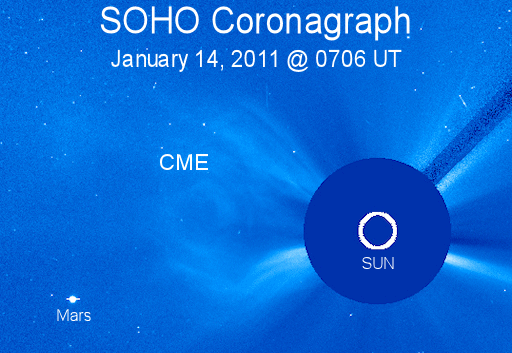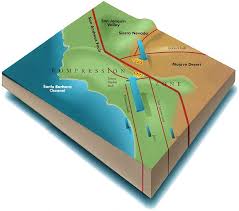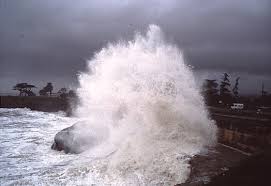“Scary”: Scientists find evidence of “bizarre sickness” in phytoplankton and bacterial communitieslinkAmong [scientists'] most striking findings are graveyards of recently deceased coral, oiled crab larvae, evidence of bizarre sickness in the phytoplankton and bacterial communities, and a mysterious brown liquid coating large swaths of the ocean floor, snuffing out life underneath. All are worrying signs that the toxins that invaded these waters are not finished wreaking havoc and could, in the months and years to come, lead to consequences as severe as commercial fishery collapses and even species extinction. … USF researchers find layers “up to 5 times thicker” than in August — “Oil’s presence on the ocean floor didn’t diminish with time; it grew”linkAt several more research stations near the wellhead, the WeatherBird II finds the ocean floor coated in similar muck. The closer the boat gets to the wellhead, the more black matter there is in the sediment. And [David Hollander, a marine geochemist at the University of South Florida] is disturbed. Worst natural disaster of Brazil´s HISTORY! 520 dead - Thousands trapped Mudslides 16 feet deeplink |
14 Jan 11- Email from reader in Brazil
Hi Robert!
7 cities destroyed: no phone lines, no water, no electricity, no basic services, more than 5000 homeless, thousands disappeared, people are without food and drink water. Cities isolated.
Worst Rainstorm destroyed these cities. Mudslides 4, 5 meters high (16 feet)! Buildings and people vanished many places!
Many cities like Teresopolis, Petropolis, Nova Friburgo in state of Rio de Janeiro are DESTROYED. Atibaia in state of São Paulo are 1 week under water.
Teresopolis and region are touristic city, were vanished in many and many places with 4 meters of monster mudslides.
Sorry my english.
I´m very scared. Nobody explains here in Brasil... But I know that this is related with the climate change due to the incoming ice age!
Teresopolis and region are touristic city, were vanished in many and many places with 4 meters of monster mudslides.
Sorry my english.
I´m very scared. Nobody explains here in Brasil... But I know that this is related with the climate change due to the incoming ice age!
Here are links.
Dimitri Ramos Silva
The ‘food bubble’ is bursting, says Lester Brown, and biotech won’t save us
 |
| Crops destroyed by Aussie floods |
Grist
For years -- even decades -- Earth Policy Institute president and Grist contributor Lester Brown has issued Cassandra-like warnings about the global food system. His argument goes something like this: Global grain demand keeps rising, pushed up by population growth and the switch to more meat-heavy diets; but grain production can only rise so much, constrained by limited water and other resources. So, a food crisis is inevitable.
In recent years, two factors have added urgency to Brown's warnings: 1) climate change has given rise to increasingly volatile weather, making crop failures more likely; and 2) the perverse desire to turn grain into car fuel has put yet more pressure on global grain supplies.
Brown's central metaphor -- which he's been using at least since the mid-‘90s -- will be familiar to readers who've lived through the previous decade's dot-com and real-estate meltdowns: the bubble. The world has entered a "food bubble," he argues; we've puffed up grain production by burning through unsustainable amounts of three finite resources: water, fossil fuels, and topsoil. At some point, he insists, the bubble has to burst.
Well, for the second time in three years, the globe is lurching toward a full-on, proper food crisis, especially in places like Haiti that have de-emphasized domestic farming and turned instead to the global commodity market for food. In 2008, global food prices spiked to all-time highs, and hunger riots erupted from Haiti to Morocco. Now prices are spiking again, and have already surpassed the 2008 peak, The Sydney Morning Herald reports.
Read Full Article
Dead birds litter roadway in Alabama
 January 15, 2011 – TANNER, AL (WAFF) - “As drivers whiz by the Huntsville-Browns Ferry Road exit on I-65 North, specks of black in the stark white snow are pretty hard to miss. Upon a closer look, you’ll see that there are scores of dead black birds, about 300 of them. Wildlife biologist Bill Gates of the Wheeler National Wildlife Refuge said they’re grackles, a native black bird. “What we want to do is see if there’s any external signs of damage, or why it might have died,” he said. Gates said feathers scattered across the area point to signs of trauma. “If something happened to scare them up, and they tried to fly across the road in a flock and a semi or something like that could’ve hit them,” he said. But to be sure, Gates is collecting samples to send off to the National Wildlife Health Center in Madison, Wisconsin. Scientists there will run a battery of tests to determine exactly what killed the birds, just as they’ve done recently, when thousands of dead birds were found in at least four other states. “Typically large numbers of birds die from disease, from poisonings and from being hit by objects or flying into objects,” Gates said. “Really you can’t rule any of those out until the birds have been examined. Gates said results from the lab could take about a month or two.” -11Alive
January 15, 2011 – TANNER, AL (WAFF) - “As drivers whiz by the Huntsville-Browns Ferry Road exit on I-65 North, specks of black in the stark white snow are pretty hard to miss. Upon a closer look, you’ll see that there are scores of dead black birds, about 300 of them. Wildlife biologist Bill Gates of the Wheeler National Wildlife Refuge said they’re grackles, a native black bird. “What we want to do is see if there’s any external signs of damage, or why it might have died,” he said. Gates said feathers scattered across the area point to signs of trauma. “If something happened to scare them up, and they tried to fly across the road in a flock and a semi or something like that could’ve hit them,” he said. But to be sure, Gates is collecting samples to send off to the National Wildlife Health Center in Madison, Wisconsin. Scientists there will run a battery of tests to determine exactly what killed the birds, just as they’ve done recently, when thousands of dead birds were found in at least four other states. “Typically large numbers of birds die from disease, from poisonings and from being hit by objects or flying into objects,” Gates said. “Really you can’t rule any of those out until the birds have been examined. Gates said results from the lab could take about a month or two.” -11Alive
Posted in Earth Watch, Unsolved Mystery 1 Comment
Activity increases at Fuego volcano in Guatemala
 January 15, 2011 - GUATEMALA - “Three Guatemalan departments are under yellow alert, as a preventive measure in the face of the sustained activity of Fuego Volcano. Sacatepequez, Chimaltenango, and Escuintla keep a wary eye on the evolution in coming days of the colossal, volcano, 3,763 meters above sea level. The volcano is being monitored by the National Coordinating Office for Disaster Reduction, and the National Institute of Seismology, Vulcanology, Meteorology, and Hydrology. The Institute has recently registered weak and moderate explosions, with thick grey ashes spewing forth from the volcano, some as high as 500 to 800 meters. Such explosions are generating shock waves felt as far as seven kilometres (about 4.3 miles) from the crater, as well as constant moderate avalanches.” -Inside Costa Rica
January 15, 2011 - GUATEMALA - “Three Guatemalan departments are under yellow alert, as a preventive measure in the face of the sustained activity of Fuego Volcano. Sacatepequez, Chimaltenango, and Escuintla keep a wary eye on the evolution in coming days of the colossal, volcano, 3,763 meters above sea level. The volcano is being monitored by the National Coordinating Office for Disaster Reduction, and the National Institute of Seismology, Vulcanology, Meteorology, and Hydrology. The Institute has recently registered weak and moderate explosions, with thick grey ashes spewing forth from the volcano, some as high as 500 to 800 meters. Such explosions are generating shock waves felt as far as seven kilometres (about 4.3 miles) from the crater, as well as constant moderate avalanches.” -Inside Costa Rica
Posted in Earth Changes Leave a comment
Highly volatile region of the Sun rotating towards Earth

January 15, 2011 - Massive explosions rock the farside of the Sun for 2nd consecutive day. Space Weather says: “FARSIDE ACTIVITY CONTINUES: An active region on the far side of the sun is crackling with solar flares and hurling CMEs into space. This eruption was nearly as dramatic as another one the day before, and suggests that more eruptions are in the offing. The explosions are occuring almost directly beneath NASA’s STEREO-B spacecraft. STEREO’s onboard telescope has recorded bright flashes of extreme UV radiation and shadowy shock waves emanating from the blast site. The telescope has also pinpointed the source: It is located just over the sun’s eastern limb. Solar rotation is turning the region toward Earth, so geoeffective solar activity could commence within days.” -Space Weather
Posted in 2012, Earth Changes Leave a comment
Disasters ravaging Earth: the food crisis of 2011 is upon us
 January 15, 2011 – “Strained by rising demand and battered by bad weather, the global food supply chain is stretched to the limit, sending prices soaring and sparking concerns about a repeat of food riots last seen three years ago. Signs of the strain can be found from Australia to Argentina, Canada to Russia. On Friday, Tunisia’s president fled the country after trying to quell deadly riots in the North African country by slashing prices on food staples. “We are entering a danger territory,” Abdolreza Abbassian, chief economist at the U.N.’s Food and Agriculture Organization (FAO), said last week. The U.N.’s fear is that the latest run-up in food prices could spark a repeat of the deadly food riots that broke out in 2008 in Haiti, Kenya and Somalia. That price spike was relatively short-lived. But Abbassian said the latest surge in food stuffs may be more sustained. “Situations have changed. The supply/demand structures have changed,” Abbassian told the Australian Broadcasting Corp. “Certainly the kind of weather developments we have seen makes us worry a little bit more that it may last much, much longer. Are we prepared for it? Really this is the question.” Global food stock piles have fallen drastically because of disaster relief across the globe. ”I haven’t seen numbers this low that I can remember in the last 20 or 30 years,” said Dennis Conley, an agricultural economist at the University of Nebraska. “We are at record low stocks. So if there any kind of glitch at all in the U.S. weather, supplies are going to remain tighter and we might see even higher prices.” -MSNBC
January 15, 2011 – “Strained by rising demand and battered by bad weather, the global food supply chain is stretched to the limit, sending prices soaring and sparking concerns about a repeat of food riots last seen three years ago. Signs of the strain can be found from Australia to Argentina, Canada to Russia. On Friday, Tunisia’s president fled the country after trying to quell deadly riots in the North African country by slashing prices on food staples. “We are entering a danger territory,” Abdolreza Abbassian, chief economist at the U.N.’s Food and Agriculture Organization (FAO), said last week. The U.N.’s fear is that the latest run-up in food prices could spark a repeat of the deadly food riots that broke out in 2008 in Haiti, Kenya and Somalia. That price spike was relatively short-lived. But Abbassian said the latest surge in food stuffs may be more sustained. “Situations have changed. The supply/demand structures have changed,” Abbassian told the Australian Broadcasting Corp. “Certainly the kind of weather developments we have seen makes us worry a little bit more that it may last much, much longer. Are we prepared for it? Really this is the question.” Global food stock piles have fallen drastically because of disaster relief across the globe. ”I haven’t seen numbers this low that I can remember in the last 20 or 30 years,” said Dennis Conley, an agricultural economist at the University of Nebraska. “We are at record low stocks. So if there any kind of glitch at all in the U.S. weather, supplies are going to remain tighter and we might see even higher prices.” -MSNBC
 The coming famine: Disasters are exacting their toll on the natural ecology of the planet. Flooding, drought, storms, and excessive heat are gnawing away at growing seasons across the globe. In my book, I warned of the great famine looming over the planet as food production plunges and global population numbers continue to swell in the face of these ensuing Earthchanges. The length of growing seasons around the world are slowly diminishing. Food shortages and food price shock will reverberate across the planet by the end of 2011. We should all be moving towards some degree of self-sufficiency in domestic food production as these Earthchanges intensify.
The coming famine: Disasters are exacting their toll on the natural ecology of the planet. Flooding, drought, storms, and excessive heat are gnawing away at growing seasons across the globe. In my book, I warned of the great famine looming over the planet as food production plunges and global population numbers continue to swell in the face of these ensuing Earthchanges. The length of growing seasons around the world are slowly diminishing. Food shortages and food price shock will reverberate across the planet by the end of 2011. We should all be moving towards some degree of self-sufficiency in domestic food production as these Earthchanges intensify.
Christianservant & (c) CNBC - For the record, less than 4% of the planet’s land surface supports permanent crops. Go Deeper: Seed collection intensifies at doomsday vault
Posted in 2012, Earth Changes, Earth Watch Leave a comment
2010 Chile earthquake set off quakes in California
 January 14, 2011 - “A devastating earthquake in Chile last year may have set off a swarm of smaller quakes as far away as California, U.S. researchers reported on Friday. They found evidence that the magnitude 8.8 quake in Chile, which killed 500 people and set off tsunamis that devastated coastal cities last February, set off a chain of events 10,000 km (6,200 miles) away. The quakes in central California started six hours after the quake in Chile, reported Zhigang Peng of the Georgia Institute of Technology and colleagues there and at the U.S. Geological Survey in Menlo Park, California. “In particular, we identify triggered microearthquakes in the Coso Geothermal Field,” they reported in Geophysical Research Letters. “This is one of the most seismically active regions in California,” they added. “At least four microearthquakes at shallow depth (under 3 km or 1.8 miles) in the Coso Geothermal Field were likely triggered by teleseismic waves from the Chile earthquake.” They also noted a cluster of deep, low-frequency earthquakes along the Parkfield-Cholame section of the San Andreas Fault, they reported in Geophysical Research Letters. Earthquakes set off seismic waves and Peng’s team said in this case types known as Love and Rayleigh waves were likely responsible.” -Reuters
January 14, 2011 - “A devastating earthquake in Chile last year may have set off a swarm of smaller quakes as far away as California, U.S. researchers reported on Friday. They found evidence that the magnitude 8.8 quake in Chile, which killed 500 people and set off tsunamis that devastated coastal cities last February, set off a chain of events 10,000 km (6,200 miles) away. The quakes in central California started six hours after the quake in Chile, reported Zhigang Peng of the Georgia Institute of Technology and colleagues there and at the U.S. Geological Survey in Menlo Park, California. “In particular, we identify triggered microearthquakes in the Coso Geothermal Field,” they reported in Geophysical Research Letters. “This is one of the most seismically active regions in California,” they added. “At least four microearthquakes at shallow depth (under 3 km or 1.8 miles) in the Coso Geothermal Field were likely triggered by teleseismic waves from the Chile earthquake.” They also noted a cluster of deep, low-frequency earthquakes along the Parkfield-Cholame section of the San Andreas Fault, they reported in Geophysical Research Letters. Earthquakes set off seismic waves and Peng’s team said in this case types known as Love and Rayleigh waves were likely responsible.” -Reuters
The seismic wave theory we’ve being reporting about for years concering the propogation of energy in the Earth and how it can perturb other faults thousands of km away finally gets an endorsement.
Posted in 2012, Earth Changes Leave a comment
Land masses rise in Arabian Sea and Bay of Bengal
 January 14, 2011 - “Sittwe: An amazing rock mass has emerged from the seawater near the offshore islands of Pharonga, located 20 miles south of Sittwe, the capital of Arakan State, report numerous witnesses. A fishing boat owner said, “We have never seen a rock mass before in the area near Pharonga Island. Now there is a rock mass appearing from the sea and it is very strange and wonderful for all.”
January 14, 2011 - “Sittwe: An amazing rock mass has emerged from the seawater near the offshore islands of Pharonga, located 20 miles south of Sittwe, the capital of Arakan State, report numerous witnesses. A fishing boat owner said, “We have never seen a rock mass before in the area near Pharonga Island. Now there is a rock mass appearing from the sea and it is very strange and wonderful for all.”
The location of the rock mass is seven miles south of Pharonga Island, 20 miles southeast of Sittwe. The rock mass is 10 feet high when the tide is low, and remains five feet above the sea when the tide is high. “All fishing boats have avoided going near the strange rock mass out of fear there is danger underwater near the rock. Many people believe the rock mass emerged from the water due to a volcano eruption under water, but no on can tell exactly how the rock mass formed,” he said. In the past, many fishing boats worked in the area because it is rich in fish, but now boats do not dare go near the rock mass to fish. According to biologist sources, there are many extinct mud volcanos around the Pharonga Islands, and the emergence of the rock mass is related to a volcano eruption in the area. However, no government officials have come near the rock so far to investigate how it appeared. -Narinjara
Submarine volcanic activity is inceasing under the world’s oceans. It’s an indication that massive geological changes are already transforming the planet we know as Earth. In November of 2010, an island arose from the sea off the Balochistan coast of Pakistan. See video below:
Posted in 2012, Earth Changes, Earth Watch Leave a comment
Earth approaching denser region of space- collison dangers increasing
 January 14, 2011 – “SUNDIVING COMET STORM: 2010 ended with an unprecedented flurry of small comets diving into the Sun. Researchers say this could herald a much larger comet still to come.” -Space Weather. More than 7 comets collided with the Sun in 2010 and the number will see a notable increase in 2011. The Solar System is moving into a denser region of space especially as our star system eclipses the galactic plane. Dark comets, interplanetary comets and large unknown asteriods could strike Earth with little or almost no warning. UK scientisists Professor Bill Napier, from the University of Cardiff, and fellow astronomer Dr David Asher, from Armagh Observatory in Northern Ireland told New Scientist magazine: Thousands of invisible “dark” comets may be posing an unseen threat to Earth and that that many “periodic” comets which take less than 200 years to complete an orbit of the Sun may be “dark“.
January 14, 2011 – “SUNDIVING COMET STORM: 2010 ended with an unprecedented flurry of small comets diving into the Sun. Researchers say this could herald a much larger comet still to come.” -Space Weather. More than 7 comets collided with the Sun in 2010 and the number will see a notable increase in 2011. The Solar System is moving into a denser region of space especially as our star system eclipses the galactic plane. Dark comets, interplanetary comets and large unknown asteriods could strike Earth with little or almost no warning. UK scientisists Professor Bill Napier, from the University of Cardiff, and fellow astronomer Dr David Asher, from Armagh Observatory in Northern Ireland told New Scientist magazine: Thousands of invisible “dark” comets may be posing an unseen threat to Earth and that that many “periodic” comets which take less than 200 years to complete an orbit of the Sun may be “dark“.
Posted in 2012, Earth Changes Leave a comment
2nd report: California preparing for super-storms
 January 14, 2011 – “California has more risk of catastrophic storms than any other region in the country – even the Southern hurricane states, according to a new study released Thursday. The two-year study by the U.S. Geological Survey is the most thorough effort yet to assess the potential effects of a “worst-case” storm in California. It builds on a new understanding of so-called atmospheric rivers, a focusing of high-powered winds that drag a fire hose of tropical moisture across the Pacific Ocean, pointed directly at California for days on end. The state got a relatively tame taste of the phenomenon in December. The team of experts that developed the scenario can’t say when it will happen. But they do say it has happened in the past and is virtually certain to strike again. “This storm, with essentially the same probability as a major earthquake, is potentially four to five times more damaging,” said Lucy Jones, USGS chief scientist on the study. “That’s not something that is in the public consciousness.” The USGS is assessing a variety of natural hazards across the country. California was chosen for the latest project, called ArkStorm, because the state “has the potential for the biggest rainfall events in the country,” Jones said. -McClatchy
January 14, 2011 – “California has more risk of catastrophic storms than any other region in the country – even the Southern hurricane states, according to a new study released Thursday. The two-year study by the U.S. Geological Survey is the most thorough effort yet to assess the potential effects of a “worst-case” storm in California. It builds on a new understanding of so-called atmospheric rivers, a focusing of high-powered winds that drag a fire hose of tropical moisture across the Pacific Ocean, pointed directly at California for days on end. The state got a relatively tame taste of the phenomenon in December. The team of experts that developed the scenario can’t say when it will happen. But they do say it has happened in the past and is virtually certain to strike again. “This storm, with essentially the same probability as a major earthquake, is potentially four to five times more damaging,” said Lucy Jones, USGS chief scientist on the study. “That’s not something that is in the public consciousness.” The USGS is assessing a variety of natural hazards across the country. California was chosen for the latest project, called ArkStorm, because the state “has the potential for the biggest rainfall events in the country,” Jones said. -McClatchy
(c) USGS
Posted in 2012, Earth Changes Leave a comment
Mass fish deaths reported in Caspian Sea
 January 14, 2011, Azerbaijan, Baku – “Mass fish death was recorded in the Iranian sector of the Caspian Sea,” Iranian Gulistan Province’s Nature Conservation Department Deputy Head Mohsen Jafarnejad said. Mass death of fish in the Caspian Sea is recorded on the west coast of the Gulistan Province. A large number of dead mullet have washed ashore, Shomalnews.com reported. “An analysis of samples taken from dead fish was carried out, and now we are waiting for their results,” Jafarnejad said. The Gulistan Province is located in northeastern Iran. The center of the province is the Gurgan city. In recent years, such cases are observed in various places around the world. Scientists suggest that the causes of the recent events may be a global disaster or testing of biological weapons.” -Trend
January 14, 2011, Azerbaijan, Baku – “Mass fish death was recorded in the Iranian sector of the Caspian Sea,” Iranian Gulistan Province’s Nature Conservation Department Deputy Head Mohsen Jafarnejad said. Mass death of fish in the Caspian Sea is recorded on the west coast of the Gulistan Province. A large number of dead mullet have washed ashore, Shomalnews.com reported. “An analysis of samples taken from dead fish was carried out, and now we are waiting for their results,” Jafarnejad said. The Gulistan Province is located in northeastern Iran. The center of the province is the Gurgan city. In recent years, such cases are observed in various places around the world. Scientists suggest that the causes of the recent events may be a global disaster or testing of biological weapons.” -Trend
Posted in 2012, Earth Changes Leave a comment

No comments:
Post a Comment
Note: only a member of this blog may post a comment.